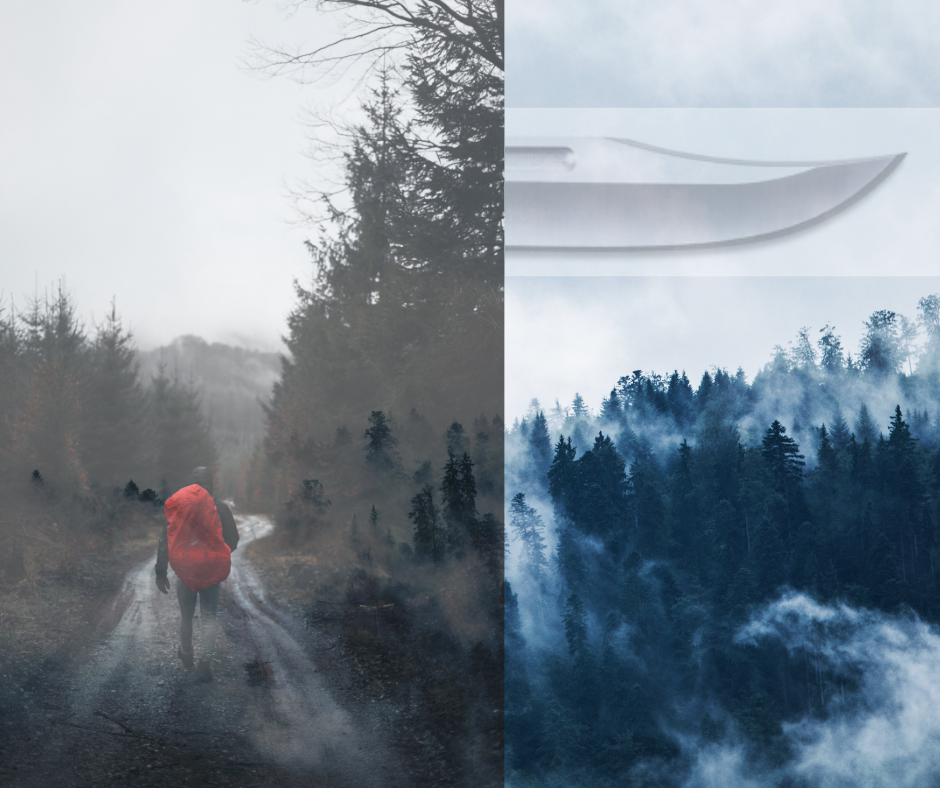Intro.
Let’s assume you are going on a week long hike in a remote wilderness somewhere. It’s imperative that you choose the right kind of knife and of the best quality you can afford because let’s face it, your life may depend on it. It’s arguably the #1 most important item you should take with you.
In this article I’ll try to break down the elements that will help you choose the right kind of knife for your upcoming trip out into the great blue yonder.
In my opinion there are several factors that will need to be considered when it comes to a survival knife.
- Fixed Blade Construction.
- Blade Guard.
- Blade steel.
- Blade length.
- Type of Edge.
- Type of Pommel.
Fixed Blade Construction.

Without doubt a fixed blade is much better than a folding knife, purely because of it’s robustness. A folder has a few moving parts and a joint that could fail if put under pressure. I’m not saying a folder is of no use on one of these survival scenarios but take one as a back up. And once again, make it a good quality one if you are on one of these long camping/hiking trips.
Blade Guard.

If possible get hold of a knife with a guard built into it. If the heat and stress builds up in a survival scenario it’s easy to make mistakes in trying to get the job done. So to stop your hand sliding down the blade ….. get a guard on it!
Blade Steel.

If you have read any of my other blog posts you would know that blade steel is a reoccurring theme. Any type of knife, for any use relies on the quality of the edge, it’s sharpness and edge retention. All of this gets analysed in great detail in my other post located here.
The reason it keeps coming up time and time again is because without a decent Blade it ends up being nothing but a fancy butter knife. So my strong recommendation is to have a good quality stainless steel blade. Something like VG-10 or M390.
Blade Length.

If I was on a hike where I may need to use my knife for a real survival situation I would like to know it’s going to be man enough to get the job done. If it’s cutting reasonable sized branches for shelter the blade cannot be some pissy little knife with a short blade (lets say a blade less than 125mm long is no good).
If I need to kill and dress an animal in a real life survival situation I need that blade to be capable of killing, gutting and dressing a hog or deer.
If I am battoning tree branches or small tree trunks for firewood it needs to cope with it. For me this blade needs to be way beyond 125mm (200mm long would be ideal)
Type of Edge.

This relates to a straight sweeping edge from ricasso to tip. Normally I don’t like serrations on a blade but they do assist in more affective cutting of certain materials like rope. So I will be looking a for a blade witrh serrations built in.
The pommel.

This is one that often gets forgotten about. My own experience has shown me two important uses of a decent pommel. One is a sharpish pommel that could smash a car window or stun and animal if hit on the head. The other use is when you might be driving in a wooden peg to join two bits of wood. In this case I’ll need a flat strong pommel you could use like a hammer (like this one here). In both scenario’s it’s important that the construction is a full tang blade to pommel set up. This way you can be sure it will withstand the pounding.
How about things like a built in compass?
In my view this doesn’t work. The most obvious place to put one is a little round one on the pommel. It just will not stand up to the rough treatment a knife is put through. It will be broken in no time!
What about handle material?

Although real wood handles that have been stabilised with resin I still prefer a modern material like G-10, it is so hard wearing. You never know the wooden handle that’s stabilised may not have been done very well. It could split during batt9ning for example.
What Sheath should I Choose?

I hate Kydex, so the only sheath I would have is leather. Sorry but that’s just me. It’s not that critical really, your choice.
So where does all that lead us?
In my ideal world, what we need is a blade of about 200mm long, made of a good quality steel like VG-10 or M390, part of the blade that is serrated, handle scales are made of composite material like G10, with a blade guard.
Upon researching the ideal knife I recommend one of these three options. They don’t exactly match my ideal knife but they do have several of the required elements.
For US$100 try this Buck Knife, Buck 120 General It has almost everything you need in a survival knife for a reasonable price.
For US$189 try this Helle GT Knife, it’s a beauty. I do admit this doesn’t have much of a guard and the handle is Birchwood but it has a very good blade steel H3LS.
Going up the price scale a little at US$250 how about this Katz Lion King, it has a heavy pommel, stainless XT-80 Blade steel (similar to 440c), a very grippy handle material called Kraton, has a half blade guard. This probably my pick of these three.
As always happy camping :0)

